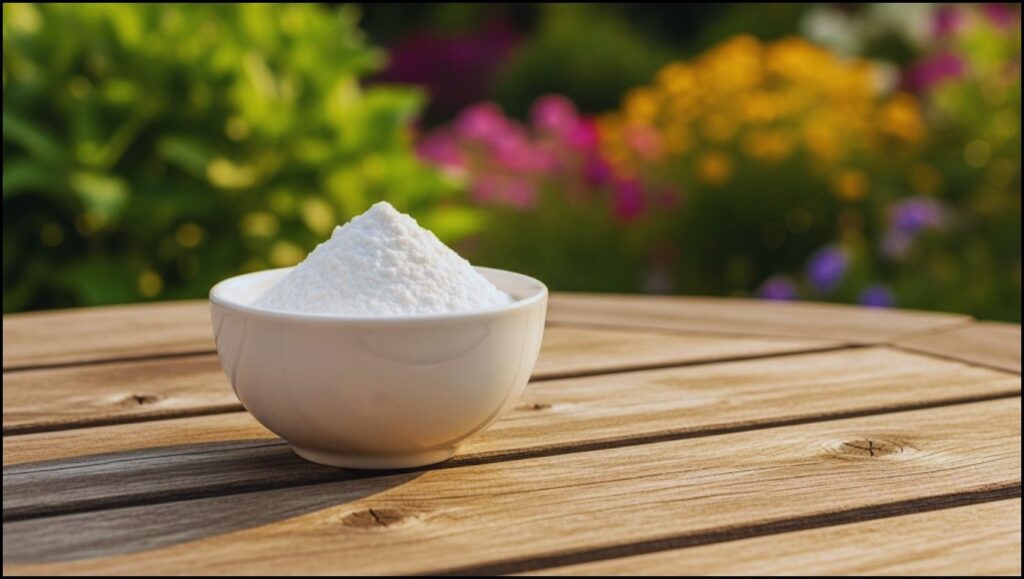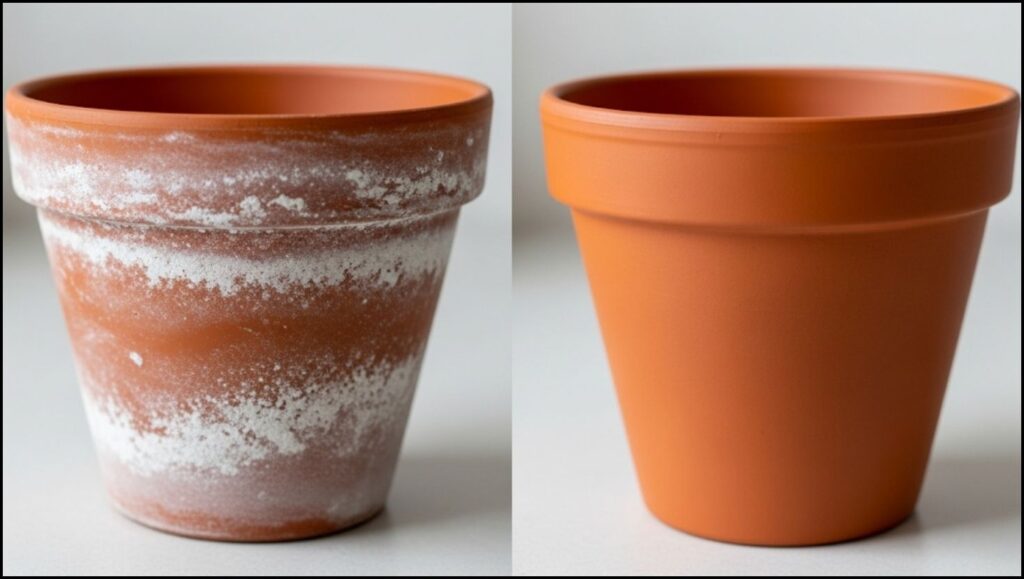
You likely know cream of tartar as the magical white powder that gives your meringue cookies their lofty peaks and your snickerdoodles their signature tang. But what if I told you this humble pantry staple, a byproduct of winemaking, holds a secret life outdoors? For the thoughtful gardener who delights in finding simple, resourceful solutions, learning how to use cream of tartar in the garden can unlock a surprising array of natural benefits. It’s an approach that blends kitchen wisdom with horticultural science.
From deterring common pests to giving your acid-loving plants a gentle boost, this versatile powder deserves a spot in your garden toolkit. Let’s explore the practical and inspiring ways you can put it to work, transforming your garden with a touch of pantry-powered ingenuity.
The Cream of Tartar Lowdown
Short on time? Here’s what you need to know about putting this kitchen staple to work in your garden beds and borders.
- Target Pests: It’s most effective as a physical deterrent for soft-bodied pests like ants and snails.
- Weed Control: Mixed with vinegar, it creates a potent, non-selective, natural weed killer for cracks and pathways.
- Know Its Limits: It is not a miracle cure-all but a tool for specific, small-scale tasks.
- Think Acidity: Its primary power comes from its acidic nature, which can help clean tools and gently adjust soil for certain plants.
What Exactly Is Cream of Tartar?
Before we dig in, let’s understand what we’re working with. Cream of tartar is technically potassium bitartrate, a powdered form of tartaric acid. It’s a natural sediment left behind during the wine fermentation process. This acidic salt is what gives it its power, both in the kitchen and, as we’ll see, in the garden.
Understanding this helps us appreciate its effects; it’s not a synthetic chemical but an organic acid, which means we should use it with the same care and intention we apply to all our gardening practices.
9 Ways to Use Cream of Tartar in the Garden
I’ve spent years experimenting with natural remedies, and while I always approach “garden hacks” with a healthy dose of skepticism, cream of tartar has earned a modest but firm place in my routine for a few key tasks.
1. A Gentle Ant Deterrent
Ants, while beneficial in some ways, can become a nuisance when they begin farming aphids on your prized roses or marching into your home. You can create a simple barrier to redirect them without resorting to harsh chemicals.
- How to Use It: Identify the ant trails you wish to disrupt. Sprinkle a thick, unbroken line of pure cream of tartar powder directly across their path.
- Expert’s Note: In my experience, this is a deterrent, not an eliminator. Ants dislike walking through the fine, acidic powder and will often reroute. It’s a wonderfully gentle homemade pesticide for sensitive areas near kitchen doors or patio gardens. You’ll need to reapply after rain or heavy watering.

2. A Potent, Natural Weed Killer for Pathways
For those pesky weeds that sprout in the cracks of your driveway or between patio stones, a cream of tartar solution can be remarkably effective. Its acidity, especially when combined with white vinegar, works as a natural desiccant, drying out and burning the leaves of unwanted plants.
- How to Make It: In a spray bottle, mix 2 tablespoons of cream of tartar with 1 cup of white vinegar. Shake vigorously until the powder is mostly dissolved.
- How to Use It: On a dry, sunny day, spray the solution directly onto the leaves of the weeds you want to eliminate. Be precise! This is a non-selective solution, meaning it will harm any plant it touches, including your lawn or nearby perennials.
- Expert’s Note: This is my go-to natural weed killer for hardscaping. According to research from the University of Maryland Extension on alternative weed control, acidic solutions like vinegar work by burning the foliage on contact. The cream of tartar enhances this effect. It works best on young annual weeds and may require a second application for tougher, more established ones.
3. Brighten Up Your Garden Tools
A clean tool is a healthy tool. Rust and sap can harbor disease and make your work harder. The gentle abrasive quality and acidity of cream of tartar make it a fantastic cleaner.
- How to Use It: Make a thick paste with cream of tartar and a few drops of water or lemon juice. Apply the paste to your pruners, trowels, or shears. Let it sit for 15-20 minutes, then scrub with a stiff brush or steel wool and rinse thoroughly.
- Expert’s Note: Always remember to dry your tools completely and apply a thin coat of camellia oil or mineral oil after cleaning to prevent future rust. It’s a satisfying ritual at the end of a good day’s work.
4. A Gentle Boost for Acid-Loving Plants
Plants like hydrangeas, azaleas, rhododendrons, and blueberries thrive in more acidic soil. If your soil is neutral or alkaline, a light application of cream of tartar can provide a temporary, gentle pH dip.
- How to Use It: Dissolve 1 tablespoon of cream of tartar in a gallon of water. Use this solution to water the soil at the base of your acid-loving plants once a month during the growing season.
- Expert’s Note: This is a mild garden soil amendment and not a long-term fix for highly alkaline soil. For a more significant and lasting pH change, I rely on soil amendments like elemental sulfur or sphagnum peat moss, as recommended by university horticulture programs. But for a quick, gentle boost, this pantry solution works in a pinch.
5. Encourage Deeper Blues in Hydrangeas
This is simply a more specific application of the principle above. The color of Hydrangea macrophylla blossoms is directly tied to soil pH. Acidic soil (below 6.0) allows the plant to absorb aluminum, which turns the flowers a beautiful, deep blue.
- How to Use It: Apply the same solution as above (1 tablespoon per gallon of water) around the base of your hydrangeas every few weeks, starting in the spring.
- Expert’s Note: This method is most effective for hydrangeas in pots or containers where you have more control over the soil environment. For in-ground plants, results can be slower and more subtle. Patience is key!
6. Deter Slugs and Snails
Much like with ants, the fine, sharp texture of cream of tartar crystals is irritating to the soft bodies of slugs and snails.
- How to Use It: Create a protective ring of the powder around the base of vulnerable plants like hostas or leafy greens. The pests will be reluctant to cross this uncomfortable barrier.
- Expert’s Note: Like any powder-based barrier, this needs to be reapplied after it gets wet. It’s an excellent, non-toxic strategy for protecting a few specific, prized plants in your collection.
7. Clean Stained Terracotta and Ceramic Pots
Over time, terracotta pots develop white, chalky residue from mineral buildup (efflorescence). Cream of tartar can help restore their natural, earthy beauty.
- How to Use It: Create a scouring paste of cream of tartar and water. Apply it to the stained areas of the pot, let it sit for about 30 minutes, then scrub with a firm brush and rinse well.
- Expert’s Note: I find this especially useful when preparing my pots for spring planting. It’s a simple step that makes everything feel fresh and ready for the new season. Make sure the pot is completely empty and dry before you start.

8. A Minor Potassium Boost
Since cream of tartar is potassium bitartrate, it does contain potassium—an essential macronutrient for overall plant vigor, flowering, and fruiting.
- How to Use It: When watering, you can add a small amount (no more than half a teaspoon per gallon of water) to give plants a very light dose of potassium.
- Expert’s Note: This should never replace a balanced fertilizer. Think of it as a supplemental treat rather than a meal. A soil test is always the best way to determine what your garden truly needs. For reliable potassium, I use well-composted materials or a balanced organic fertilizer like kelp meal.
9. A Polishing Agent for Brass and Copper Garden Accents
If you have brass hose nozzles, copper plant markers, or other decorative metal elements in your garden, cream of tartar can restore their shine.
- How to Use It: Mix equal parts cream of tartar and lemon juice to form a paste. Rub it onto the tarnished metal, let it sit for 5-10 minutes, and then buff it off with a soft, clean cloth. Rinse and dry.
- Expert’s Note: The shine this simple paste brings back to my old copper watering can is always a delight. It’s a perfect example of using simple, effective ingredients to care for the things we love.
A Resourceful Approach to Gardening
Embracing the potential of a simple ingredient like cream of tartar is about more than just finding a new garden trick. It’s a mindset—a commitment to resourceful, thoughtful, and creative problem-solving. While it won’t replace your essential fertilizers or soil amendments, it offers a suite of gentle, natural solutions for the everyday challenges and chores we face as gardeners. So next time you’re in your kitchen, take another look at that little jar in the spice rack. You now know it holds the potential not just for delicious treats, but for a healthier, more beautiful garden, cared for with intelligence and grace.
Homeowners Embrace DIY Garden Plumbing for Sustainability and Savings
